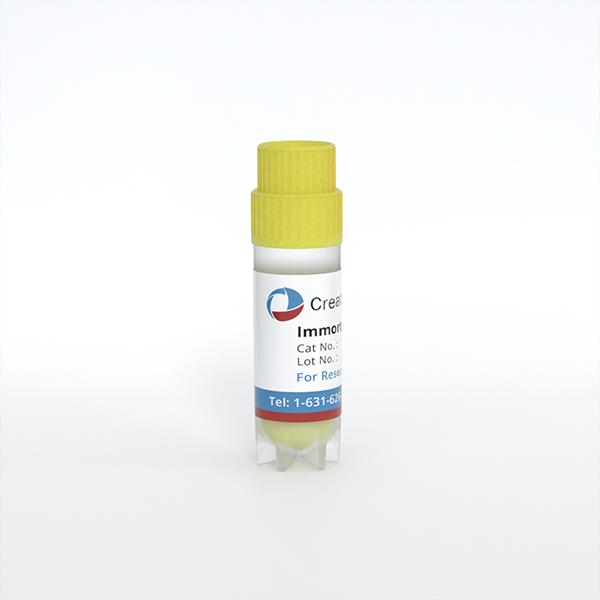Description
The corpus luteum develops from an ovarian follicle during the luteal phase of the menstrual cycle and is responsible for the decidualization of the endometrium. The Immortalized Rat Luteal Cells (GG-CL) is conditionally immortalized through the temperature-sensitive simian virus (SV40 tsA209) and has retained many primary luteal cell markers such as estrogen receptor-β, glucocorticoid receptor (GR), interleukin-6 (IL-6), orphan nuclear receptor nur 77 and 20α-hydroxysteroid dehydrogenase (20α-HSD). In addition, GG-CL responds to stimulation by PRL, estradiol, and cAMP, making the cells a useful model for studies involving gene expression and regulation of luteal cells.
Culture Properties
Adherent
Morphology
Small and compact with low cytoplasm-to-nucleus ratio at permissive temperature; differentiated, flat monolayer appearance with increased cytoplasm-to-nucleus ratio at non-permissive temperature.
Immortalization Method
Serial passaging and infection by SV-40 tsA209 Temperature Sensitive Mutant virus
Markers
IL-6, ER-β, GR, 20α-HSD, JAK2
Applications
For Research Use Only
Storage
Directly and immediately transfer cells from dry ice to liquid nitrogen upon receiving and keep the cells in liquid nitrogen until cell culture needed for experiments.
Note: Never can cells be kept at -20 °C.
Recommended Products
CIK-HT003 HT® Lenti-SV40T Immortalization Kit
CIK-HT004 HT® Lenti-SV40 (tsA58 temperature sensitive mutant) Lentivirus Immortalization Kit
Quality Control
1) Northern analysis and RT-PCR were used to confirm the expression of IL-6, glucocorticoid receptor (GR) , estrogen receptor-β (ER-β) and orphan nuclear receptor nur 77. 2) Cells were subjected to treatments of exogenous prolactin, estradiol, and cAMP to examine effects.
Citation Guidance
If you use this products in your scientific publication, it should be cited in the publication as: Creative Bioarray cat no.
If your paper has been published, please click here to submit the PubMed ID of your paper to get a coupon.



